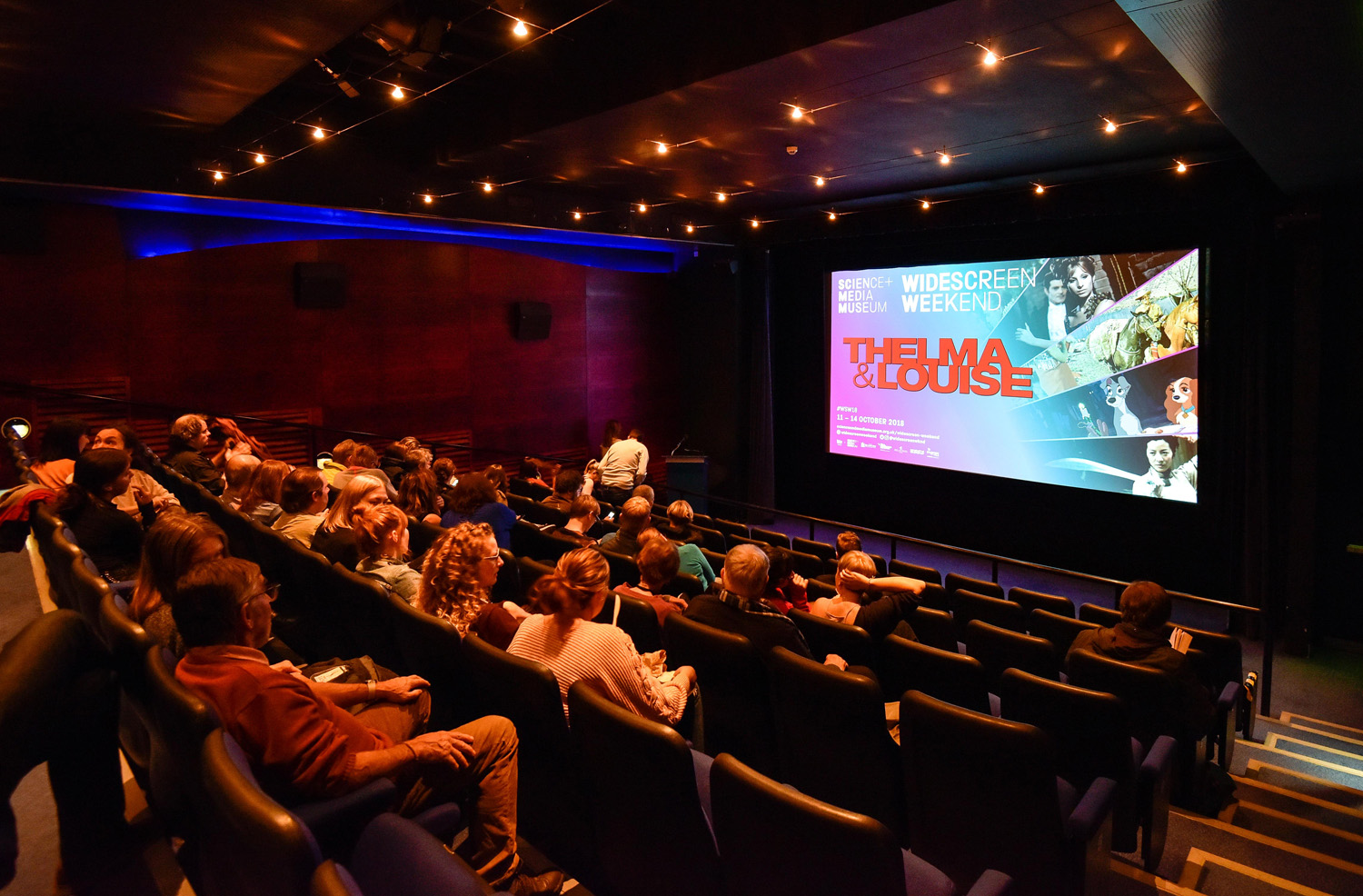One of the highlights of this year’s Widescreen Weekend was our Women in Widescreen celebration. As part of it, two special guests—Annabel Grundy, Major Programmes Project Manager at Film Hub Midlands and Melanie Iredale, Interim Director of Sheffield Doc/Fest—gave a brilliant introduction to our screening of Thelma & Louise. In fact, we thought it was so good we’ve reproduced it in full below for the benefit of everyone who couldn’t make it to the screening. Enjoy!
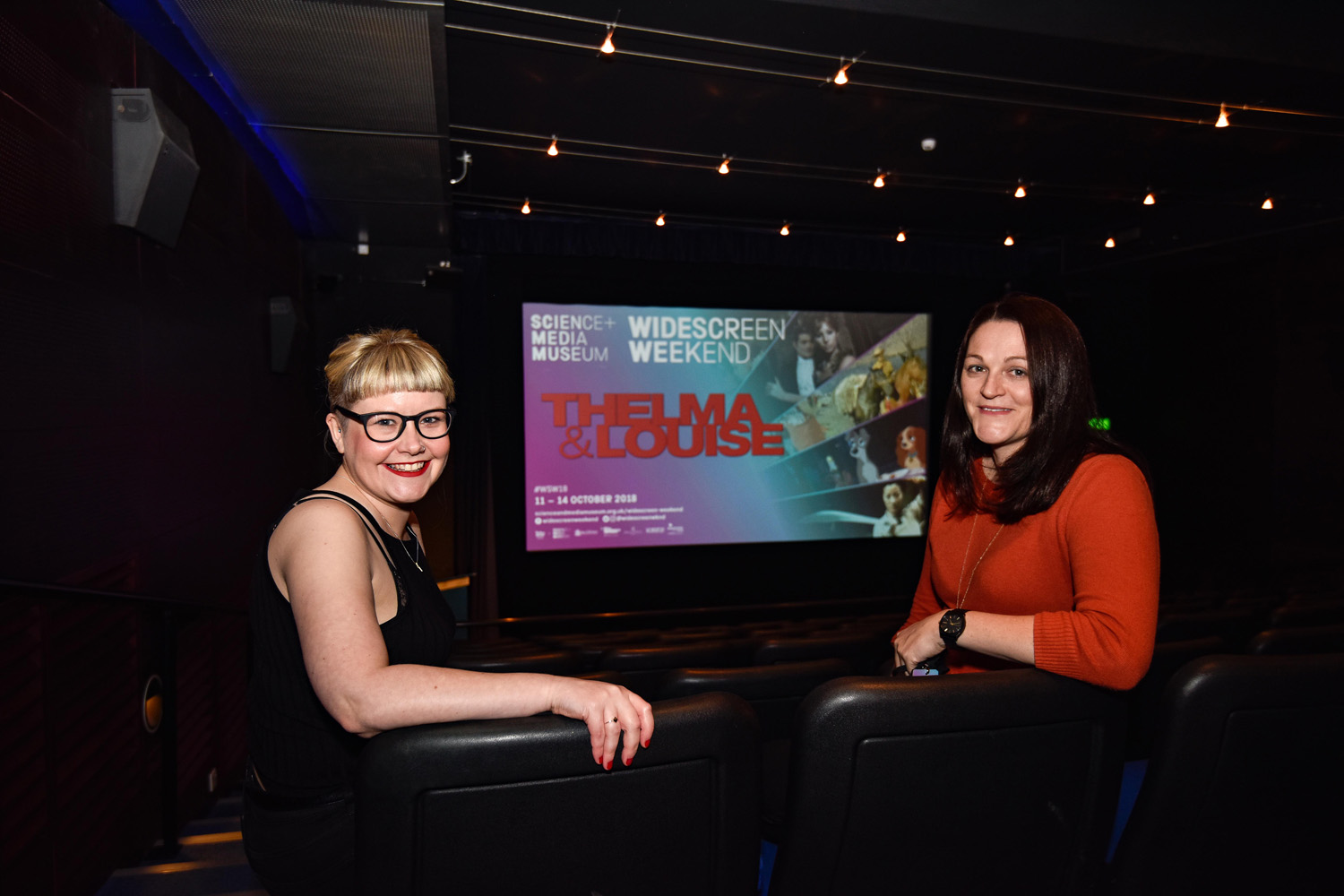
Thelma & Louise is a road movie and buddy movie from 1991 which turned both genres on their heads by casting women in the lead roles. We’re delighted to see this film as a centrepiece in Widescreen Weekend’s ‘Women in Widescreen’ celebration at this year’s festival, celebrating women’s enduring contributions to cinema, from VFX, to writing, to on screen. At a moment when half of our industry news is dominated by various hashtags and an ongoing howl from a much-maligned community, we can also celebrate the game changers and trailblazers, the iconic performers and perfect cinematic moment around which 1992’s ‘year of the woman’ coalesced.
Written by Callie Khouri and directed by Ridley Scott, the film follows two friends from Arkansas—Thelma Dickinson, played by Geena Davis, and Louise Sawyer, played by Susan Sarandon—who plan a weekend away fishing, but whose trip takes them further than planned when they find themselves on the run from the police.
This buddy movie, that morphs into an outlaw epic, that morphs into an existential voyage of discovery, is rooted in character that is waiting to be seen, turning on its head both the heroes’ journey and the idea that women’s stories are sidebars, or supporting characters.
Callie Khouri was quoted in Vanity Fair in 2003 saying:
‘I saw, in a flash, where those women started and where they ended up. Through a series of accidents, they would go from being invisible to being too big for their world to contain, because they’d stopped cooperating with things that were absolutely preposterous, and just became themselves.’
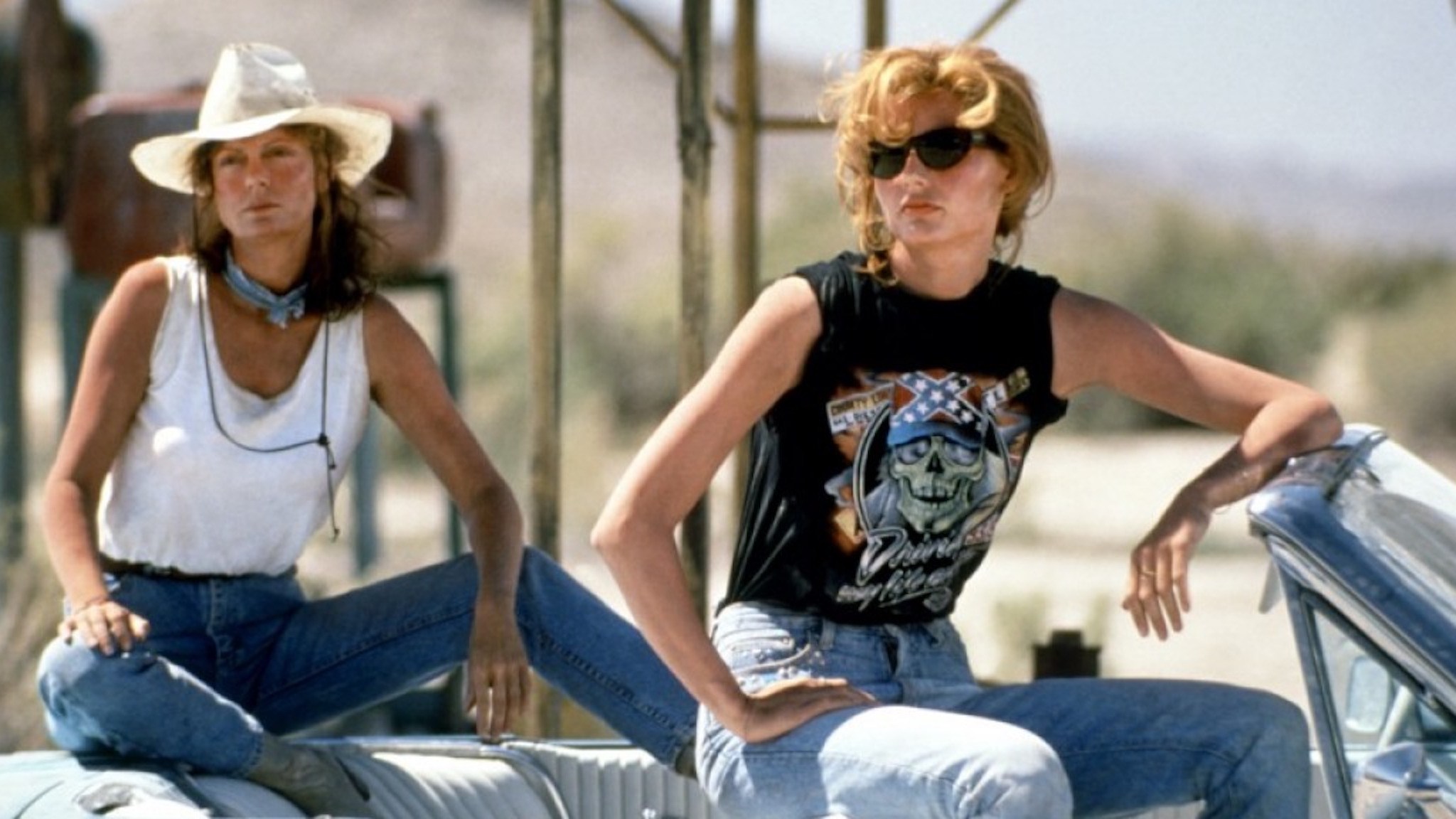
The now-iconic pairing of two dusty outlaws actually took a winding road to settle on final cast—as unthinkable as it is to envisage a world without these red-headed, double-denimed icons. An original pairing of Michelle Pfeiffer and Jodie Foster was derailed by ongoing tussles over who would finally direct, with Pfeiffer departing to shoot Love Field and Foster pulling out for the role of Clarice Starling in Jonathan Demme’s Silence of the Lambs—bagging her first Oscar.
During protracted production negotiations, the script continued to attract heat from Hollywood elites, with Meryl Streep pitching for Louise, and Goldie Hawn keen on Thelma. This pairing ultimately fell aside over calls for a happier ending—perhaps more in keeping with Hawn’s brand than Khouri’s vision.
Throughout the process Geena had been pursuing Scott, and at the 11th hour a deal was struck which hinged on the now-confirmed director’s enticement to Sarandon to leave New York—at a time when she’d eschewed Hollywood as a land ‘gripped by greed.’
In Thelma & Louise, it’s the men who play the supporting characters—primarily Christopher McDonald (and Geena Davis’ ex-fiancé in real life) as Thelma’s husband Darryl, Michael Madsen as Louise’s boyfriend Jimmy, Harvey Keitel as Detective Hal Slocumb—the police officer tasked with tracking down the women—and Brad Pitt as JD, the hitchhiker they encounter along the way.
In a similar vein to Geena’s weekly calls to Scott’s office, George Clooney auditioned multiple times for the role of JD before eventually losing out to the then-unknown Pitt, who was paid a princely $6,000 for the role that set him on the path to Hollywood royalty.
Thelma & Louise was shot on Panavision, on 35mm, and it will be a pleasure to watch the film on print this evening. It was filmed mostly in California and Utah. Scott and his cinematographer Adrian Biddle took inspiration from the paintings of John Register—evoking space and light, long shadows of empty space reflected on vinyl surfaces and domestic interiors.
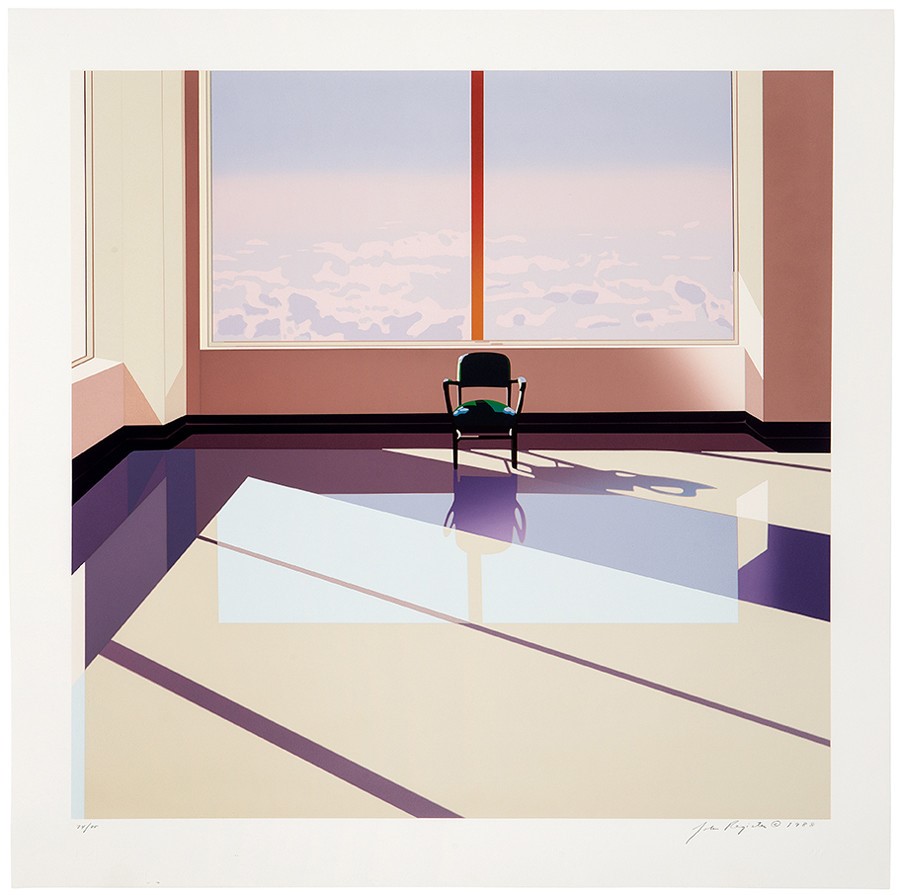
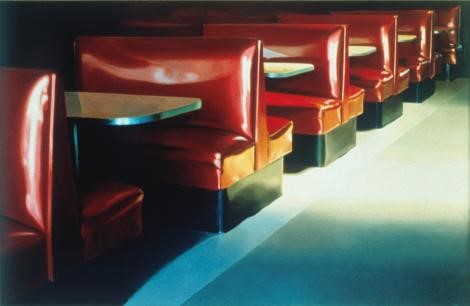
A European creative team—Adrian Biddle (cinematographer), Hans Zimmer (music), and production design by Norris Spencer—is credited by Scott with the ability to see America from the outside, and bring out its mythology.
In casting the landscape as a third character, Scott and Biddle seem to echo Khouri’s sentiment that ‘on their own Thelma and Louise are just people, but together, they create another, a third thing of its own’. It does feel that out there, under the golden sky or ‘proscenium’ of landscape, they become different, free, creatures of a wilder environment.
Biddle received a nomination for the Oscar for Best Cinematography for Thelma & Louise, but lost out to JFK. This was one of five other nominations alongside Best Director, Best Actress (x 2—for both Sarandon and Davis), Editing and Screenplay.
When the film premiered 27 years ago at Cannes Film Festival, the audible cheers of critics as Louise confronts Thelma’s attacker were the first clue of how this film would resonate across time and genders.
Thelma & Louise faced multiple pushbacks along the way, from studios dismissing the script as a ‘meaningless film about two bitches’ to the near-catastrophic financial situation of Pathé, then led by the ill-fated Giancarlo Parretti. At final cut the negative was held hostage by the processing lab until bills were paid—but the eventual final film nevertheless tapped into a cultural moment and eventually grossed $45m on its modest $16.5m budget.
More than this, the film became a symbol of 1992’s ‘year of the woman’—gracing Time magazine and echoing the election of an ‘unprecedented five—yes five!’ women to the Senate and Anita Hill’s challenge to the Supreme Court nomination of Clarence Thomas, alleging sexual harassment and intimidation.
However where ‘year of the woman’ implies a culmination or pinnacle to female achievement we can of course look to the present day—a year where Anita’s words have been echoed by Doctor Blasey Ford; a year where despite the efforts of multiple men and women in film, the dial in directorial representation remains stubbornly under ten percent for female-led works; and, of course, a year where we still question whether the options for our two protagonists would be very different.
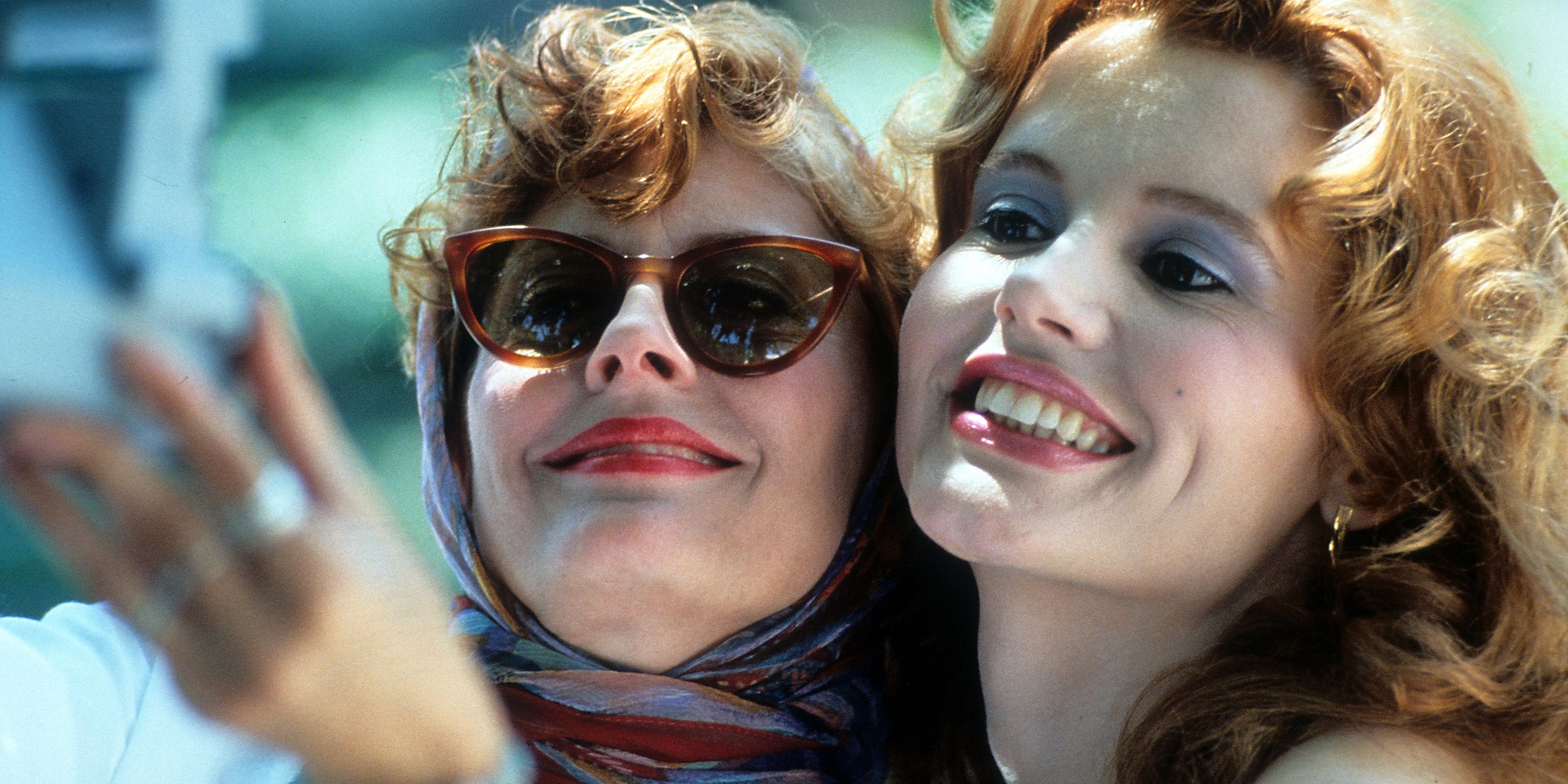
We are able to talk about representation today in part because of Geena Davis’s work since the film. In 2004 she founded the Geena Davis Institute on Gender in Media, to effectively map, investigate and ultimately change the representation of women in and on film. As well as rigorous, incontestable research to make the case for change, the foundation is also behind the campaign #seeittobeit, focusing on positive representation of women and girls on screen, with agency and speaking roles.
The film also hinges on the support of producer Mimi Polk Gitlin, a producing partner of Scott’s who originally brought the script to his attention. Initially approached by Khouri for advice on the script, Mimi championed the project from the outset and remained involved in production, holding firm to casting and plot decisions and eventually persuading Scott that he should give up looking for a director and take on the project himself. As a film that both cemented Scott’s belief in female leads—let’s never forget his decision to cast the unforgettable Warrant Officer Ripley as a woman following Sigourney Weaver’s audition—and his skill in character study as well as action, listening to women paid off for this director.
In his own words Scott has said:
‘I’d never had trouble letting women tell me what to do. All the years I’d run my company, I’d found that women were the best men for the job. Scott Free LA was run by a woman; Scott Free London was run by a woman. I could sit around and analyse the fool.’
Despite Scott’s inexorable climb to directorial god-head, the Oscar win was slightly less of a golden ticket for Callie Khouri. Commercially successful projects followed, including feature films The Divine Secrets of the Ya-Ya Sisterhood (2002) and Something to Talk About (1995)—films which made money but which received mixed critical responses and far less acclaim. Perhaps this lack of clamour points to another problem more pressing for women directors, for many of whom one failure can mean the end of a career as ‘too big a risk’, as opposed to a ‘blip’ on the path to franchise deals and regular appearances on shortlists enjoyed by their male counterparts. Safe to say, neither these two films or the 2008 ‘flop’ Mad Money (which achieved $24m on a $12m budget) have lived up to Hollywood expectations.
Since 2012, Khouri has helmed the American musical drama television series Nashville, now in its sixth season. This series chronicles the lives of five country music singers, creating an ensemble piece that deep dives into the experience of women at different stages of life, creativity and career. In an interview with Rola Bauer, Studio Canal in 2017, Khouri stated that working in television is a far friendlier home for women’s stories, in particular older women. She stated [sic] ‘In Hollywood, it’s impossible, your audience is children, they don’t want to know’—though it’s not entirely clear whether she was talking about the ticket-buying public or studio heads.
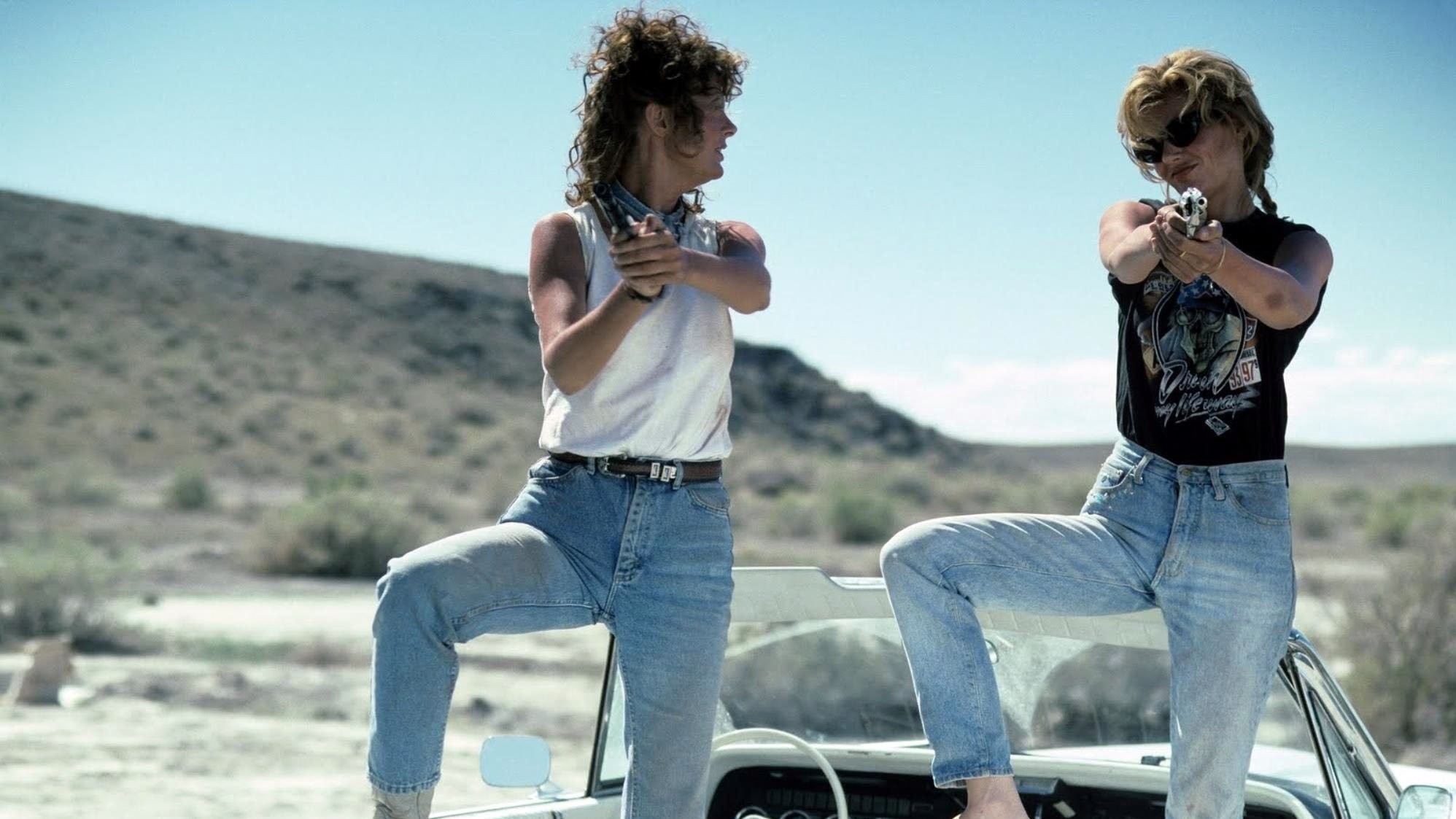
Thelma & Louise is still, to this day, read as a feminist classic, prompting revivals, reissues and a current run on streaming giant Netflix, a platform also becoming widely known for a far more diverse and inclusive approach to authorship—even as it disrupts our love affair with cinema.
In researching this intro it’s been a joy to revisit so many critical and personal responses to the film, and more than that, to re-watch a film with an agenda so elegantly characterised by lively, breathing, conflicted and complicated characters. In a time where film distributors now say a film needs an activist movement to sell it, there is pleasure to be had from simply watching women talking, laughing, throwing all their possessions to the wind, blowing things up and driving too fast, while the men of the film exist on the periphery—at worst predators, at best impotent to help—and all left behind.
This divestment of physical constraints lends itself to a queer reading—their characters can be seen gradually ‘butching up’ in terms of how they dress and wear their hair, literally throwing their makeup out of the car. Without wanting to give away the ending for those who haven’t seen it—or the many parodies of it—it’s safe to say it resists a heteronormative conclusion, and Thelma’s assertion ‘Something’s crossed over in me and I can’t go back… I mean, I just couldn’t live’ can be read as a more complicated statement than being outside the law.
There’s so much more we could say about this film, but for now we’ll close with the words of Callie Khouri. As part of her acceptance speech for Best Screenplay at the Oscars, she said ‘for everyone who wanted to see a happy ending for Thelma & Louise—to me, this is it’. That it continues to be presented at events like this is testament to Callie’s vision. Enjoy.
